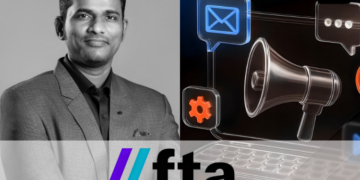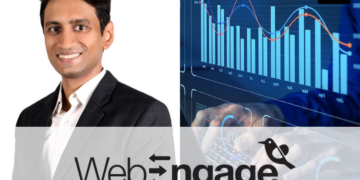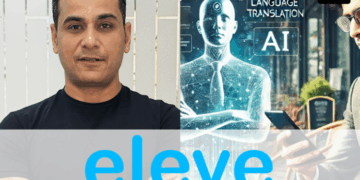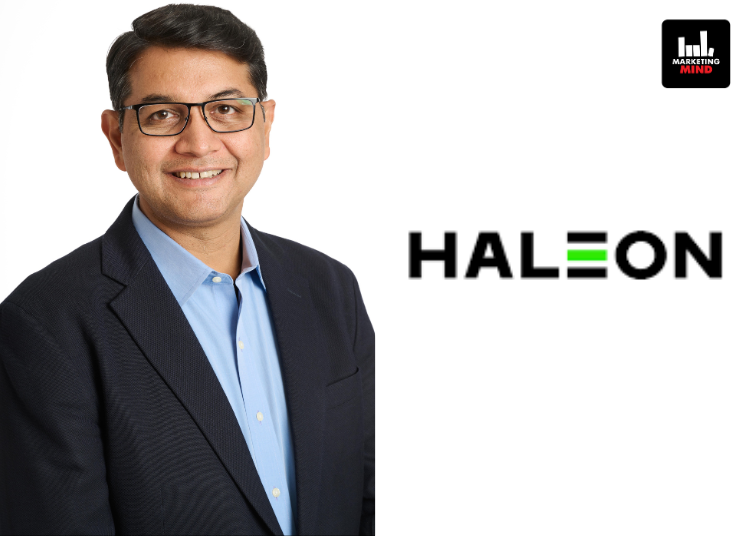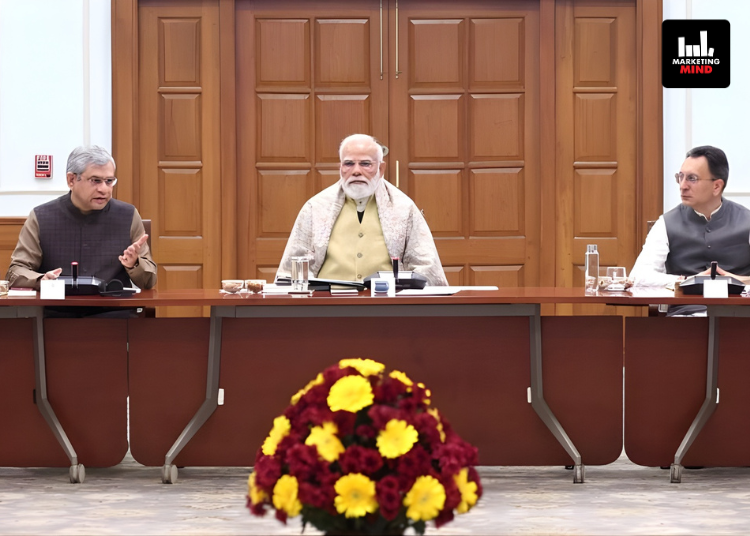Smytten Pulse, an AI-powered data solutions and consumer research platform, has unveiled ‘Brand Track’, a next-gen tool for modern marketers which aims to revolutionise how they gauge and oversee consumer perception, engagement, and the efficacy of their marketing initiatives, in order to proactively stay ahead in the competitive landscape, Swagat Sarangi, Co-founder of Smytten, said.
Sarangi emphasised that this innovation empowers modern marketers unlike anything witnessed in the last 20-30 years.
As per the brand, in India, the total addressable direct-to-consumer (D2C) market is expected to grow by over 15 times from 2015 to 2025. With Brand Track by Smytten Pulse, marketers can achieve 2-3X cost efficiency compared to other marketing tools.
With over 20 million digital-first consumers and more than 100 million product trial-led insights across 250+ lifestyle categories, Brand Track by Smytten Pulse will provide exposure to crucial metrics including brand awareness and recall (TOM and spontaneous), brand consideration, and usage funnel insights. The platform also offers customised surveys, enabling marketers to design bespoke surveys for logo testing, product testing, video ad testing, and concept and product name testing tailored to their specific business needs.
In a conversation with Marketing Mind, Sarangi extensively discussed the distinctions between Brand Track tool and traditional offline methods, its benefits for marketers, short-term goals, the anticipated evolution of the AI-powered data solutions market in the upcoming years, and many more additional insights.
Brand Track vs traditional offline methods
Sarangi explained that brand tracking is something very standard. Most consumer brands, especially the larger ones, have been conducting brand tracking for years. Essentially, it is a continuous dipstick or a study performed with a core audience to understand how key metrics such as brand salience, awareness, consideration, and overall brand equity are evolving over time.
“In a typical brand tracking process, let’s consider the example of a telecommunications company like Airtel. Airtel might define its target group (TG) as individuals aged 18 to 30, with key markets in North India and South India. The goal is to obtain a homogeneous representation of the audience from these regions each month. This involves randomly recruiting 400 to 500 people from each market without any bias to measure various metrics,” Sarangi said.
“The first metric measured is often top-of-mind awareness. This is followed by aided recall and unaided recall, which are important indicators of the effectiveness of media inputs. For instance, if Airtel launches a major campaign in North India, they will want to determine whether it has increased brand consideration, top-of-mind awareness, and ad recall. Over time, these metrics are continuously tracked to assess the overall impact of their advertising efforts. This ongoing process is known as a track because it monitors the progress of the campaign at different points in time,” added.
Furthermore, he pointed out that the previous research method involved recruiting the audience and administering surveys manually. We have now fully digitized this process, utilising their extensive audience base of around 20 million people. Today, researchers can access this audience and conduct surveys online in an entirely unbiased manner. This not only significantly reduces the time required for the research but also minimises recruitment bias that was common in earlier methods.
What sets this tool apart from others in the market?
Sarangi said that currently, brand track is primarily conducted by various research companies, and there has been little to no digitization or disruption in this industry for quite some time. Most surveys are administered using a method called Computer-Aided Personal Interviewing (CAPI) or through both online and offline surveys.
“The process involves spending around two months collecting survey responses from different audiences, manually collating the data, and then deduplicating it to ensure authenticity. This is a very cumbersome and time-consuming process. These traditional methods are the only solutions available in the market for brands today. Therefore, if you need to conduct a brand track, you must engage a research agency. This agency will handle all the data collection on the ground, deduplicate the data, analyse it, and then present the findings to you in the form of a PowerPoint presentation (PPT),” he said.
“Our solution is entirely do-it-yourself, fully digital, and driven by AI. It assists and empowers brands to achieve their goals more efficiently and accurately,” Sarangi added.
Key features of Brand Track that marketers should take note of
He explained that there are three key points to consider. First, the overall audience recruitment is now entirely under the control of brand marketers. They can target specific demographics, for example, individuals aged 18 to 25 with a certain level of affluence and specific behavioural traits. This level of precision is challenging to achieve in an offline world.
He emphasised, “For example, if you are a skincare brand and want to connect with users of skincare products, particularly those who use facial serums, it’s important to track both core users and those who use related products. Thanks to our extensive database of 20 million users who try and shop for products with us, recruiting this targeted audience is much easier compared to traditional offline methods. This approach ensures 100% accuracy, giving brands confidence that they are reaching the right audience.”
Nowadays, the process of data collection and analysis is much more efficient compared to the past. Previously, gathering data on the ground and analysing the output was extremely time-consuming. By the time the results were available, the campaign might have already ended, making it impossible to make any necessary adjustments in real-time, Sarangi mentioned.
Furthermore, he went on to say that with current technology, brands can decide the frequency of data collection based on their needs. For instance, during an intensive media campaign, a brand may choose to collect data every seven days to monitor the campaign’s impact. This continuous tracking allows marketers to see the real-time effects of their media efforts on the ground. Today, this process is automated and can be managed with just a click of a button. Marketers can select the frequency of data collection and the specific audience they want to track, streamlining a process that used to take one to one and a half months. This innovation enables timely adjustments and more effective campaign management.
“Another intriguing aspect for marketers today is the ability to launch a sub-track with great flexibility. For instance, if I am running an India-wide campaign and I decide to activate the South India market, specifically Andhra Pradesh, I can initiate a regional media or influence campaign there. I can then launch a separate track for Andhra Pradesh and compare it with my India track to identify any differences,” Sarangi said.
“Traditionally, this would require starting a new process and track entirely offline. However, with our tool, you can simply adjust your parameters slightly and launch a new track with just a click of a button, in any desired geography. The system will automatically collect and tabulate the data, show you comparisons, and analyse the results. It will inform you which parameters are performing well and which are not. Additionally, we are leveraging advanced AI LLM models to analyse a significant amount of unstructured data, providing insights that are completely AI-driven,” he added.
Sarangi also highlighted that there is no need to doubt the accuracy of the tool, as it is precisely controlled by the user, giving brand marketers complete visibility and control. Everything is transparent, nothing is done behind the scenes.
The platform allows marketers to set up their data and provides insights into the consumer personas who have responded to surveys. Additionally, marketers can conduct quick audits by randomly selecting a few consumers for face-to-face conversations, facilitated through computer-aided video interviews. The entire process is automated end-to-end, without any human intervention. It is purely technology-driven, he said.
Short-term objectives
Sarangi said, “We are currently in the process of standardising our tracking methods to accommodate our expanding audience base. Specifically, we are focusing on refining the tracking process for several intriguing lifestyle sub-categories. This initiative aims to establish a fundamental benchmark across various demographics and geographic locations within these sub-categories. This benchmark will provide clarity in interpreting data, addressing the challenge where current statistics, such as 70% awareness, lack context. By standardising data interpretation methodologies across different regions and categories, we aim to enhance clarity and coherence in our analytical frameworks, which will soon be integrated into our own system.”
“Secondly, our current focus lies predominantly within the FMCG category. However, we acknowledge the diversity of our audience, which includes consumers from various other sectors. Consequently, we are developing and launching capabilities tailored for industries such as automotive and fintech. This initiative aims to expand the applicability of our solutions across different sectors, leveraging our deep understanding of user needs,” he added.
Furthermore, he went on to say that in the short term, their third priority involves collaborating extensively with major FMCG companies to analyse the transition from traditional offline brand tracking to digital audience behaviour. This entails understanding how consumer preferences have evolved and necessitates a shift in how we interpret data from conventional consumers to those engaging digitally.
“One of our key priorities has been to collaborate closely with esteemed researchers to enhance our credibility. Today, we are pleased to announce that we are a member of MRSI, an organisation renowned for its expertise and leadership in the field of research and innovation. Our partnership with MRSI is focused on promoting new methodologies and technologies within the industry,” Sarangi said.
“Additionally, we are actively sharing a wealth of information and data through our blog, fostering a vibrant community of marketers who value close collaboration and shared insights. What began as a modest LinkedIn group has now evolved into our own thriving community of marketers. Lastly, as part of our marketing strategy, we are prioritising partnerships to drive our growth and outreach efforts,” he added.
Future plans for enhancing and expanding Brand Track
“We are currently working on numerous AI models. In addition to utilising GeminAI and other AI frameworks, we aim to enhance the comprehension of incoming data on brand tracking, making it more accessible for marketers. Often, despite the availability of data and graphs, the synthesis of this information remains subject to individual interpretation. To address this, we are integrating extensive external inputs by scraping the internet and feeding this data into our AI models. This approach enables us to provide more accurate predictions regarding the implications of brand tracking. Looking ahead six months, our goal is to offer marketers an AI assistant capable of interpreting and responding to every query related to brand tracking. While our current analyses are AI-driven, we are progressing towards deploying fully conversational AI capabilities,” Sarangi said.
He underscored that this evolution will empower users to receive real-time insights and explanations. For instance, if a marketer observes a decline in top-of-mind awareness in Punjab, this AI model will not only pinpoint the cause but also provide insights into demographic trends, such as the 26 to 35 age group becoming less visible due to reduced media exposure. Moreover, users will have the ability to query detailed user personas or compare key metrics over an 18-month period, prompting the system to generate graphs and visualise data instantly.
“So, tomorrow, if you want to assess last year’s performance in Punjab. This evaluation will finalise your competitive strategy, as we will have a lot of tracks running for the same industry. Our AI model heavily relies on internet data to analyse trends such as hyperactive digital marketing campaigns from competitors, evident in search trends and popular hashtags, influencing brand visibility,” he added.
Evolution of AI-powered data solutions market in coming years
Sarangi highlighted, “I believe that this is the only way to move forward. The volume of data we generate today across numerous interfaces has created a perplexing situation for marketers. Each team interprets data differently and provides insights that often conflict. For instance, I have been a marketer myself and if I consult with my media team, their perspective on the data would be different, similarly with my PR team and standard market reports. Even general internet searches yield contrasting findings. This complexity bewilders marketers, necessitating a new approach.”
“Fortunately, advancements in generative AI, particularly in LLM models, now enable us to make sense of unstructured data with unprecedented accuracy. This presents a significant opportunity for market disruption. Our advantage lies in our extensive collection of structured data over the past seven years, capturing diverse decision-making and purchasing intents. We aim to pioneer AI applications in our region, leveraging cutting-edge technology. That’s where we are also working with Google very closely,” he added.
In conclusion, while speaking about Brand Track, he emphasised, “This innovation empowers modern marketers unlike anything we have seen in the past 20-30 years. While brand tracking has been commonplace, there has been a notable absence of innovation. This marks the first instance in our country where the entire research process is transitioning fully towards technology and AI.”

